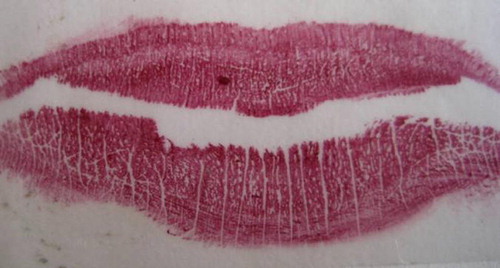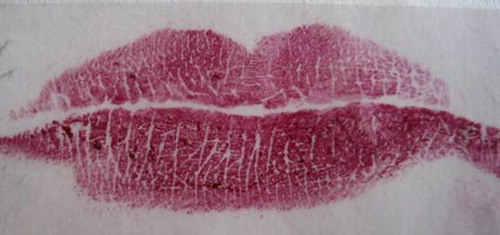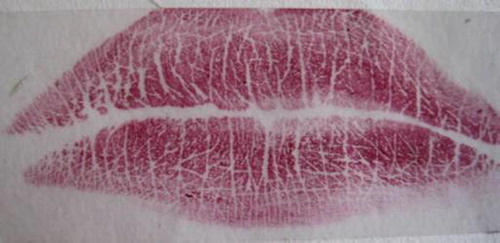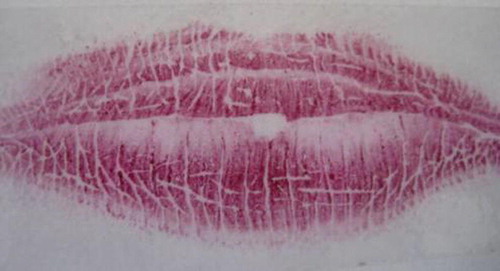Abstract
Background: Identification is a major problem facing forensic practitioners, DNA and finger prints are highly useful but sometimes aren't easily collected from the crime scene. Lip print could be useful in this field being unique to each individual. Aim: The current study aimed at detecting the frequency and gender relation of lip print pattern in an Egyptian sample. Methodology: Samples were collected on white copy paper, divided into four quadrants then examined with magnifying lens for pattern distribution. Results: The study showed that pattern IV was the most frequently represented pattern in the study sample, pattern I & II were more prevalent in males and females respectively. Prevalent pattern in Cairo and Lower Egypt was I while it was IV in Upper Egypt. Conclusion: The lip print pattern can differ due to gender and geographical origin in Egyptian subjects.
1 Introduction
In various civil, criminal and mass disaster cases, positive identification of unrecognizable deceased individuals could be very difficult. Out of the many existing techniques used for this purpose; comparison of fingerprints, DNA and dental records are probably the most common techniques applied. However, human lip print recognition is one of the most interesting emerging fields in confirming personal identification.Citation1
Lip prints are defined as normal wrinkles and grooves present in the zone of transition of human lip, between the inner labial mucosa and outer skin, examination of which is known as Cheiloscopy. Those patterns are identifiable as early as the sixth week of intrauterine life. Lip print gained its importance being a unique feature for each individual, as finger prints. Research studies regarding the use of lip prints as evidence in personal identification and criminal investigation are scanty. However, studying it in depth and establishing further information concerning lip prints will certainly help as useful evidence in forensic practice.Citation2
Fischer, 1902 was among the first to take notice of the biological phenomenon of systems of furrows on the red part of human lips in the year 1902. While the use of lip prints in personal identification and criminalization was first recommended in France by Edmond Locard as early as 1932. Le Moyne Snyder was the first to introduce a case in which lip prints helped the crime investigators in an unusual way. Suzuki and Tsuchihashi were among the first to classify the various patterns present on the human lips.Citation3
Lip prints could be left at crime scenes on various objects, e.g. drinking glasses, cigarette butts, and duct tape. Both direct inspection and photography allow more precise and detailed observations needed for lip print investigations. Proper investigation of the individualizing characters of lip prints is essential to identify suspects and further confirm their presence in crime scene.Citation4
The oily and moist secretions from sebaceous and salivary glands located at the vermillion border (which is the sharp demarcation between the lip and the adjacent normal skin) and subsequent moisturization from the tongue enables the formation of a latent lip print whenever there is contact with lips leaving behind an important form of transfer evidence. A lip print at the scene of crime can offer a clue for different questions as the type of the crime, the number of the people involved, sexes of suspects, cosmetics used, habits, occupational traits, and the pathological changes of lips themselves.Citation5
Lip groove patterns rarely change, resisting numerous types of external factors including physical injury, pressure and exposure to hot or cold stimuli. Its permanence enables it to be a reliable tool in forensic field investigations. Especially when combined with other evidence, it greatly adds to the success of crime solving mystery.Citation6
Studies related to geographical origin are always an important step for confirming identification. There were no enough data to correlate sex and geographical distribution to lip pattern. Our study aimed to detect lip pattern among some Egyptians of both sexes and of different geographical distribution.
2 Method
2.1 Subjects
The collected specimens in the research belonged to 221 randomly selected adult Egyptian volunteers of both sexes and of various geographical origin.
Exclusion criteria: Any participant suffering from an inflammation, scars, deformity or past history of plastic surgery in the lips was excluded from the study.
Ethical considerations:
| – | An informed valid consent was taken from each participant. | ||||
| – | An approval was obtained from Ethics committee. | ||||
| – | In order to secure confidentiality, specimens were coded and anonymously stored. | ||||
2.2 Recording the lip prints
Dark Red or brown, non-persistent, non-glossy, non-metallic lipstick was used to get clear lip prints. White paper (white A4 Globules classic 80-g copy paper) was used to take the impressions of the lips. A thin film of lipstick was applied onto cleaned and dried lips, left for 5 min, and then the impressions of the lips were taken on the specified papers. The following method was used for taking the impressions from every subject. Direct light pressure was applied by the lips on a standardized properly folded paper then they were stored in a card board box under suitable environmental conditions.
2.3 Examination of the prints
Each lip print was divided into four topographic areas (QI, QΠ, QШ, QIV) after a study conducted by Santos in 1967,Citation1 examined by magnifying hand lens with direct light focused on it. The lip print was classified into 4 patterns according to K. Suzuki and Y. Tsuchihashi's classification.Citation3 –.Citation7
3 Results
In our study 221 patients were enrolled. Lip print was studied from 4 lip quadrants yielding 884 samples, 4 types of patterns were analyzed (I–IV) (see ) .
Table 1 Percent (%) of demographic data of the Egyptian participants involved in the study: (N = 221).
4 Discussion
Usually personal identification is made through comparing AM and PM records, so if there is a detailed AM record of different parts of upper and lower lips, it could open door to personal identification through thorough examination of lip pattern.Citation2
The research studies and data regarding lip print pattern use in identification are so scanty. The current study was established in order to provide more details regarding the usefulness of lip print pattern, showing its distribution among a sample of Egyptian population. To our knowledge the present study is the first in Egypt to describe lip print pattern among different geographical areas.
It was noticed from the current study that no similar pattern was shown between any two individuals and this was in coincidence with Suzuki et al.Citation3 and Kumar et al.Citation2, which supports the role of lip print in personal identification being unique to each person.
The present study showed that the most frequent pattern among persons enrolled in it was pattern IV () and this agrees with a study done by Prabhu et al.Citation8 which was done on 100 individuals with the aim of extensive examination of lip print patterns with referral to the frequency of each pattern among them.
Table 2 Frequencies of different lip patterns among the Egyptian participants involved in the study: (N = 221).
Sivapathasundharam et al.Citation9 reached the same result in their study, confirming that the most prominent pattern was IV. Contrasting a study by Kapoor and BadiyeCitation10 showed that the predominant pattern in Indian sample population of 200 persons was pattern I, this could be attributed to the fact of different location and races of involved populations that might be related to genetic factors.
Prabhu et al.Citation8 explained that this variation could be due to geographical variation or strict standards of different pattern identification.
As regards the predominant pattern among both sexes ( and ) that the prevalent pattern in males was pattern I while it was pattern III in females with no statistically significant difference between patterns in both sexes. Non significance could have occurred due to small sample size, so larger samples might be needed to clarify degree of significance (see ).
Fig. 5 Column chart showing distribution of different lip patterns as regards gender distribution among Egyptian participants involved in the study.
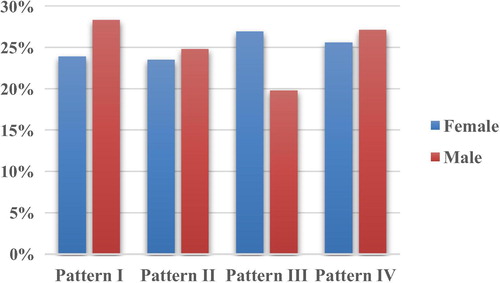
Table 3 Chi square (X2) analysis of different lip patterns as regards gender distribution among Egyptian participants involved in the study.
Table 4 Chi square (X2) analysis of different lip patterns as regards origin distribution among Egyptian participants involved in the study.
This coincides with a study in India by Badiye and Kapoor,Citation10 but differs from the study by Krishnan et al.Citation11 which was focusing on the role of lip prints, finger prints for gender differentiation and showed there was a relationship between lip pattern and sex but the predominant pattern in their study was pattern IV in males and I in females.
This agrees with Prabhu et al.Citation8 who showed in their study that there is no correlation between lip pattern and gender as pattern V was predominant in both sexes. Also a study in Dakahlia (Egypt) showed that the prevalent pattern in both sexes was pattern I negating the correlation between lip pattern and sex.Citation4
Regarding the geographical distribution of different lip pattern in Egyptian population selected sample ( & ), the predominant pattern in Cairo and lower Egypt was pattern I and this could be attributed to the fact that people tend to leave lower Egypt and settle in Cairo for better living conditions, while the most prevalent pattern in upper Egypt was IV with statistically highly significant difference between different patterns among different geographical origins.
Fig. 6 Colum chart showing distribution of different lip pattern as regards origin distribution among Egyptian participants involved in the study.

This could be attributed to the closed nature of Upper Egypt where most inhabitants are in closed families that tend to marry from each other and have limited internal immigration to and from other areas in Egypt.
On the other hand a study by Ragab et al.Citation4 in Dakahlia, showed that the prevalent pattern was pattern I but this could be related to the fact that Dakahlia is a part of upper Egypt and their sample didn’t show variation as ours as we included persons from different places of upper Egypt.
In the current study the prevalent pattern in each quadrant ( & ) quadrant QI: pattern I, quadrant QII: pattern I and IV, quadrant QIII & QIV: pattern IV, with no statistical significant difference between different patterns in different quadrants.
Fig. 7 Column chart showing distribution of different patterns by different quadrants among Egyptian participants involved in the study.
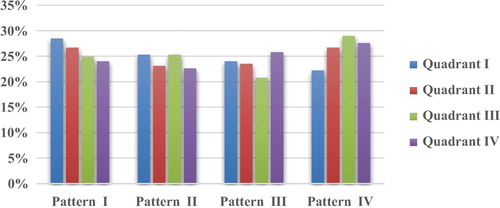
Table 5 Chi square (X2) analysis of different patterns distribution by different quadrants among Egyptian participants involved in the study:
This partially goes in hand with a study by Ghimere et al.Citation12 on Nepalese population where the most prevalent pattern in quadrants QI & QII was I, but differs in that pattern I was also prominent in quadrant QIII & QIV in their study while in ours the most prominent in quadrant QIII & QIV was pattern IV.
This also disagrees with Amith et al.Citation12 where quadrant QIII & QIV showed pattern II as the dominant pattern. Also current results differs from a study by Nagrate et al.Citation13 where dominant pattern in quadrants QI, QII, QIII & QIV were II, III, III and II respectively. These various results could be attributed to the difference of population dominance of particular lip print and ethnicity of subjects recruited.Citation14
There was no significant difference in pattern distribution among different ages () which supports the fact that lip print pattern is stable across years. This was confirmed by a study by Nagrale et al.Citation13 in India, who concluded that features of lip print relative to surrounding anatomy was proved to be stable, recordable emphasizing on its value as a forensic tool.
Table 6 ANOVA statistical analysis of relation between age and different lip patterns among Egyptian participants involved in the study.
A study by Randhawa et al.Citation7 threw the light on limitation and changes that occur with advancing age especially after 40 years, due to thinning of lips, perioral area age changes and decrease in lip height. These can influence lip print pattern decreasing its efficacy in identification.
5 Conclusions
| 1. | Lip print can be used among Egyptian subjects for individual identification. | ||||
| 2. | There is a variation in lip print based on individual origin and gender. | ||||
6 Recommendations
| – | Further studies on larger sample size of different races for better comparison and could help to create a comprehensive database so that the lip print pattern might serve as an important source of information needed for crime solving and personal identification. | ||||
| – | Digital examination of lip print pattern could be more helpful in other studies. | ||||
| – | Extensive longitudinal study is needed to monitor the changes of lip pattern across years. | ||||
| – | New techniques (e.g. magna brush technique, cobalt oxide) have been evolved for tracing latent lip print in crime scene so further studies are needed to assess feasibility and validity of these new techniques. | ||||
Funding
This research didn’t receive any special grant from funding agencies in the public commercial or not- for-profit sectors; it was totally and personally funded by authors.
Notes
Peer review under responsibility of Alexandria University Faculty of Medicine.
Available online 16 August 2017
References
- Reddy LVK. Lip prints: an overview in forensic dentistry. 1st ed. J Adv Dent Res. 2011.
- L.B.KumarV.JayaramanP.MathewS.RamasamyR.D.AustinReliability of lip prints in personal identification: an inter-racial pilot studyJ Forensic Dent Sci.82016178
- K.SuzukiY.TsuchihashiNew attempt of personal identification by means of lip printJ Indian Dent Assoc.42197089
- A.R.RagabS.A.El-DakrooryR.H.RahmanCharacteristic patterns of lip prints in Egyptian population sample at Dakahlia GovernorateInt J Legal Med.1272013521527
- A.AlzapurR.S.NagothuH.B.NalluriLip prints – a study of its uniqueness among students of MediCiti Medical CollegeIndian J Clin Anat Physiol.420176870
- R.VenkateshM.P.DavidCheiloscopy: an aid for personal identificationJ Forensic Dent Sci.320116770
- K.RandhawaR.S.NarangP.C.AroraStudy of the effect of age changes on lip print pattern and its reliability in sex determinationJ Forensic Odontostomatol.2920114551
- R.V.PrabhuA.DinkarV.PrabhuA study of lip print pattern in Goan dental students – a digital approachJ Forensic Leg Med.192012390395
- B.SivapathasundharamP.A.PrakashG.SivakumarLip prints (cheiloscopy)Indian J Dent Res.122001234237
- N.KapoorA.BadiyeA study of distribution, sex differences and stability of lip print patterns in an Indian populationSaudi J Biol Sci.2015112131
- R.P.KrishnanR.ThangaveluV.RathnaveluM.NarasimhanGender determination: role of lip prints, finger prints and mandibular canine indexExp Ther Med.11201623292332
- H.V.AmithL.NageshA.V.AnkolaLip prints-can it aid in individual identificationHealth Renaissance: Nepal J Online.2011113118
- N.NagraleBipinchandraTirpudeP.MurkeyS.PatondEstablishing cheiloscopy as a tool for identification: an assessment on 500 subjects in central IndiaAl Ameen J Med Sci.2014201204
- M.H.Abdel AzizF.M.Badr El DineN.M.SaeedRegression equations for sex and population detection using the lip print pattern among Egyptian and Malaysian adultJ Forensic Leg Med.442016103110

